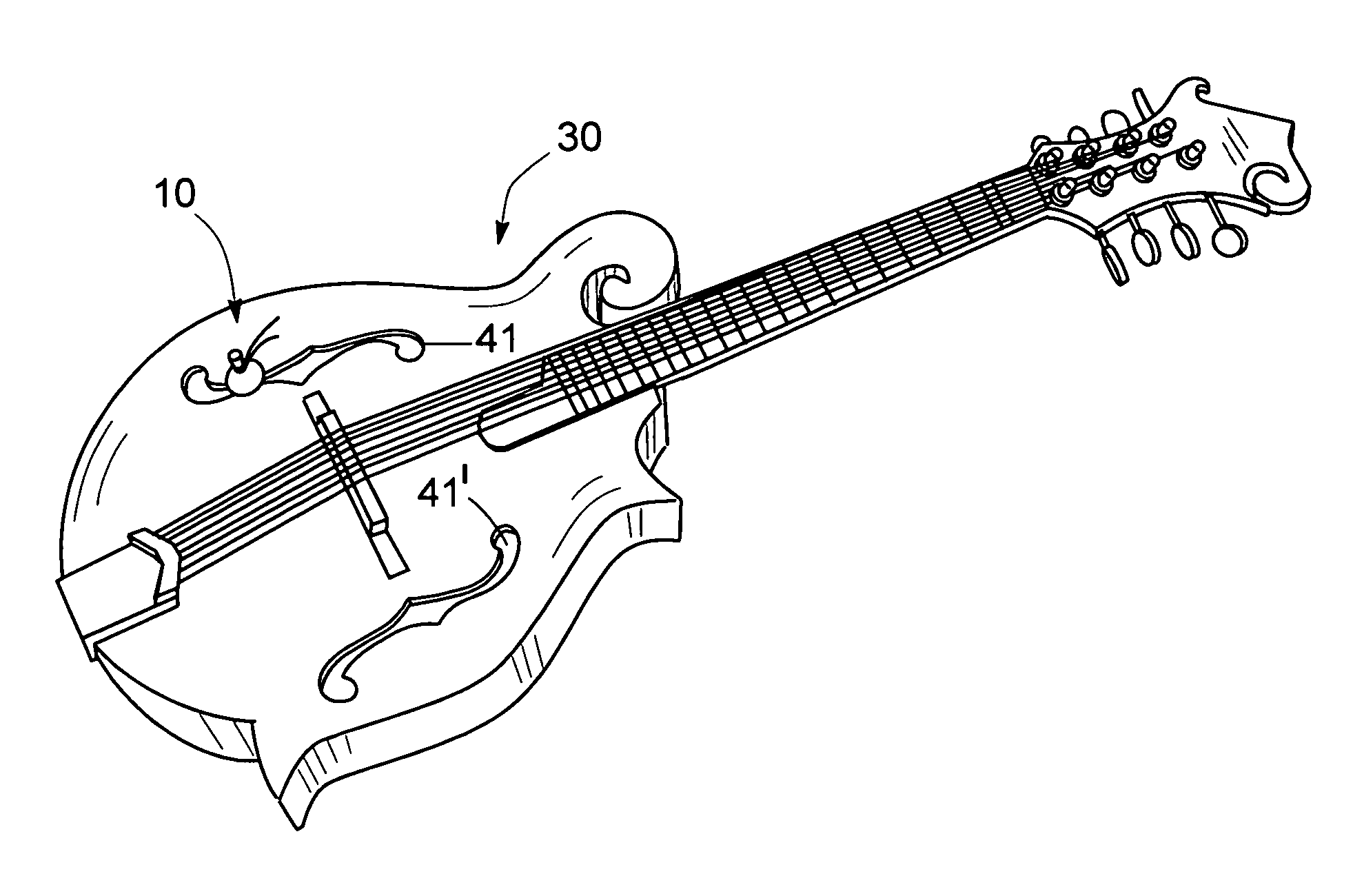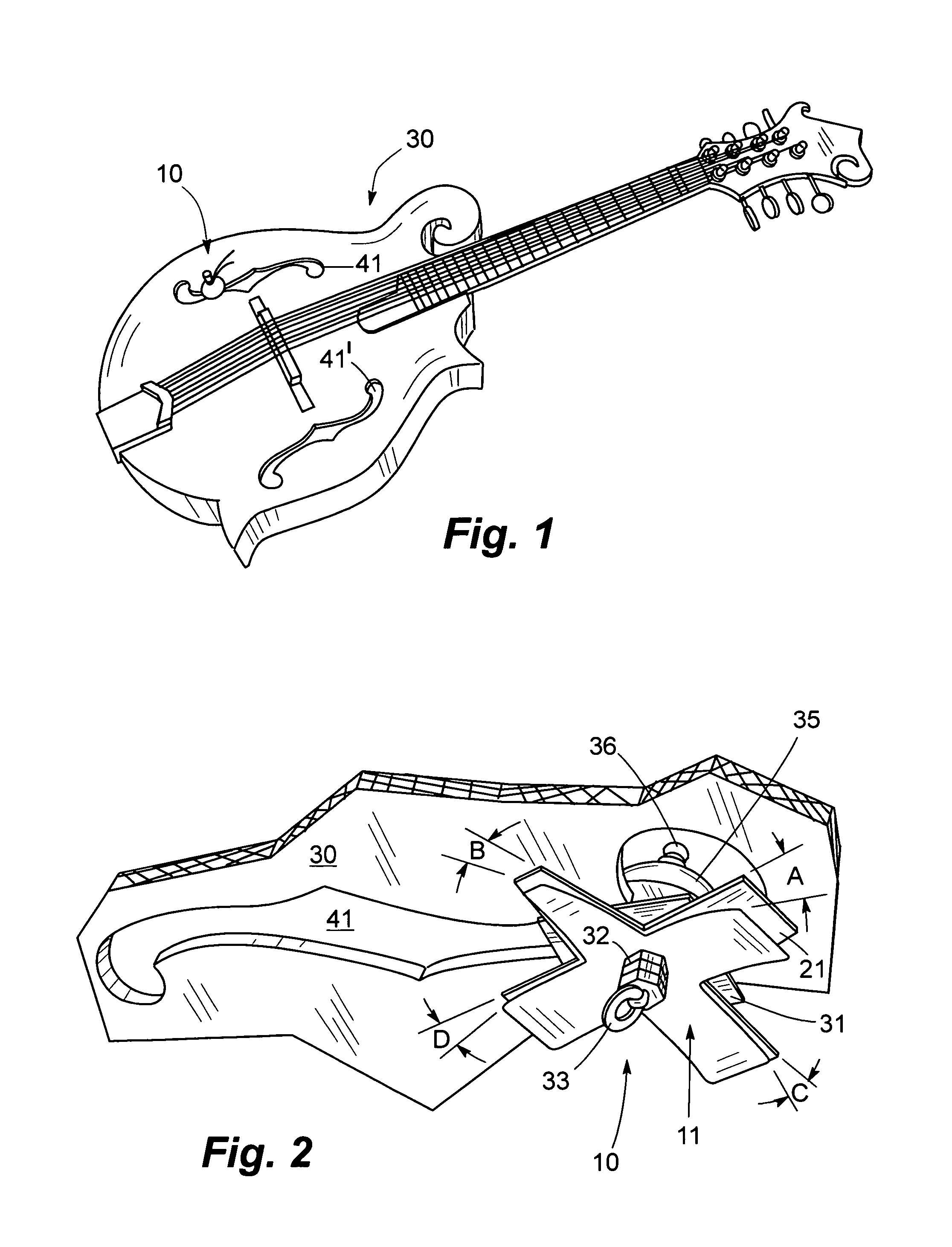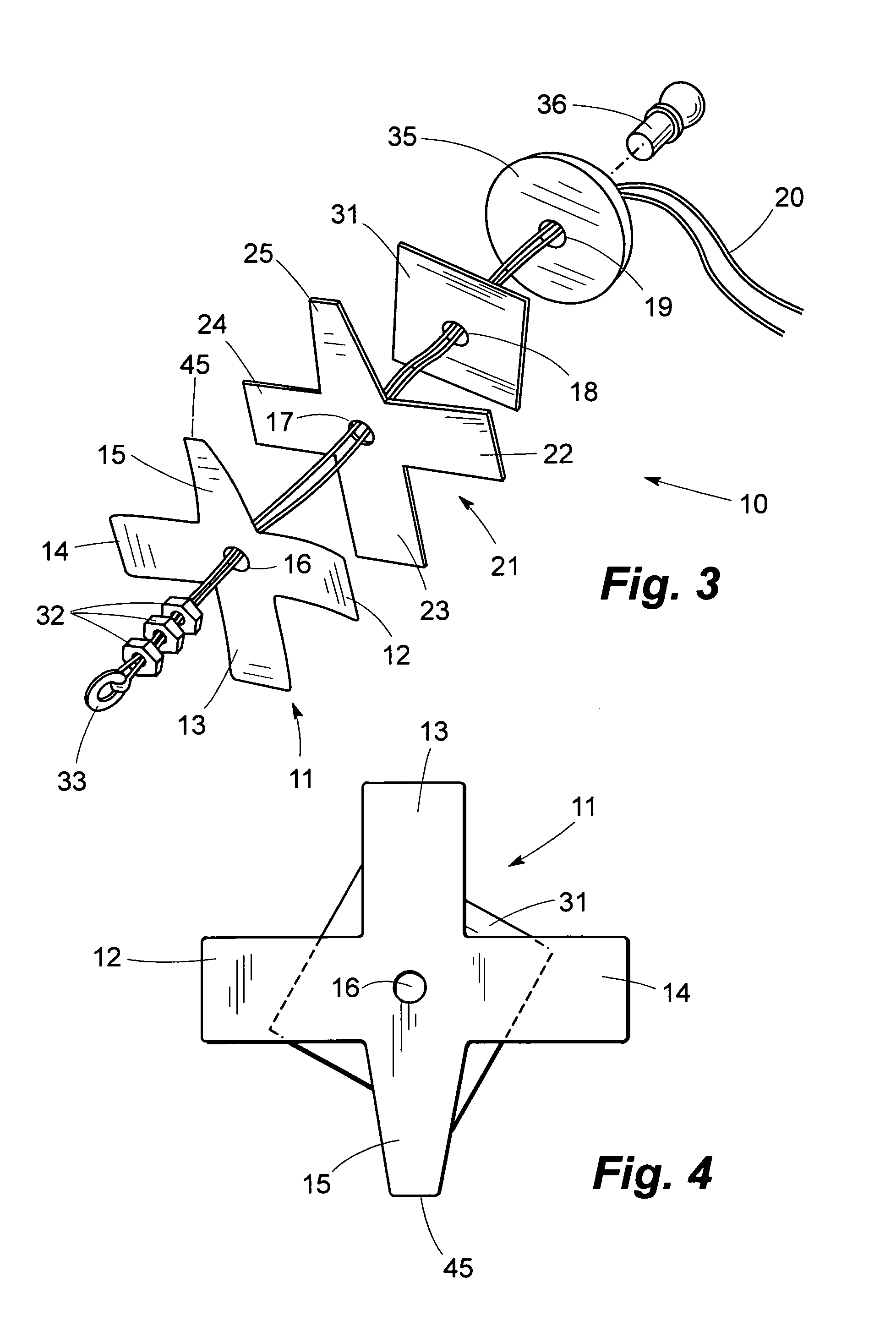Acoustic amplifier and tone controller for stringed musical instruments
a technology of acoustic amplifier and tone controller, which is applied in the field of fhole guitars and fhole mandolins, can solve the problems of difficult to achieve the volume, sound duration and tone richness needed to create beautiful music with today's acoustic stringed instruments, and the small size of their sound chamber, so as to facilitate the change of timbre in f-hole instruments, increase volume as well as timbre, and increase brightness and clarity.
- Summary
- Abstract
- Description
- Claims
- Application Information
AI Technical Summary
Benefits of technology
Problems solved by technology
Method used
Image
Examples
first embodiment
[0036]In the drawings, an improved sound enhancing device for use with a stringed instrument 30 having elongated sound openings 41, 41′ is indicated generally by the reference numeral 10. The device 10 includes a sound emitter, a bridge 35 and a fastener which, in the first embodiment, is a waxed, knot-free string 20.
[0037]Constructed of thin metal and wood strips in a stacked array, the sound emitter comprises at least two nested cross-shaped elements 11, 21 and one or more timbre squares 31, which define central holes 16, 17, 18, respectively. Preferably, both the cross-shaped elements 11, 21 and the timbre square 31 are fabricated from metal or two-ply veneer wood.
[0038]Metal timbre squares 31 are typically thin carbon steel, which measures approximately 0.007-inch thick and 1-inch square, and brass squares of the same size but which measure approximately 0.010-inch in thickness. Wood veneer squares are typically made of maple or mahogany or glued combinations of these or similar...
second embodiment
[0053]In the second embodiment, a sound enhancing device 51 is provided for use with a banjo 50 or similar instruments such as openable drums. The device 51 employs a bolt 52 instead of the string 20 to mount both the sound emitter and a bridge 53 within the banjo's sound chamber in such a way that the bridge physically contacts the instrument's wood rim.
[0054]Preferably, one of the original bolts for engaging one of the banjo's existing “shoes”55 used to hold a hook 56 (for securing the banjo's top) is replaced. Made of either steel or brass, the replacement 52 has the same diameter and thread but is slightly greater in length, by about 3 / 16 inch, than the original bolt. Moreover, central mounting holes 56, 57, 58 in the cross-shaped elements 11′. 21′ and timbre square 31′ and the opening in the bridge 53, which is preferably a brass (or alternately, steel) finishing washer, are sized to receive the bolt 52.
[0055]The metallic finishing washer 53 serves as a highly efficient circula...
third embodiment
[0056]In a third embodiment, an improved sound enhancing device 60 is provided to facilitate changing timbre in F-hole instruments 30. Both the bridge 35 and nested cross-shaped elements 61, 71 are mounted outside of the sound chamber. Very easily added without removing the timbre square 31 from the sound chamber, externally mounted cross-shaped elements 61, 71 and their paired arms 62, 72; 63, 73; 64, 74; 65, 75 greatly increase the volume as well as affecting the timbre. Brightness and clarity are also increased if at least one set of paired arms is positioned over the F-hole. This brightness is further enhanced when a hole, preferably about ¼ inch in diameter, is formed in each of the two opposing square shaped arms 72, 74 in the outermost cross-shaped element 71; and these opposing arms are then positioned so that their holes are disposed over the F-hole 41 in use.
PUM
 Login to View More
Login to View More Abstract
Description
Claims
Application Information
 Login to View More
Login to View More - R&D
- Intellectual Property
- Life Sciences
- Materials
- Tech Scout
- Unparalleled Data Quality
- Higher Quality Content
- 60% Fewer Hallucinations
Browse by: Latest US Patents, China's latest patents, Technical Efficacy Thesaurus, Application Domain, Technology Topic, Popular Technical Reports.
© 2025 PatSnap. All rights reserved.Legal|Privacy policy|Modern Slavery Act Transparency Statement|Sitemap|About US| Contact US: help@patsnap.com



